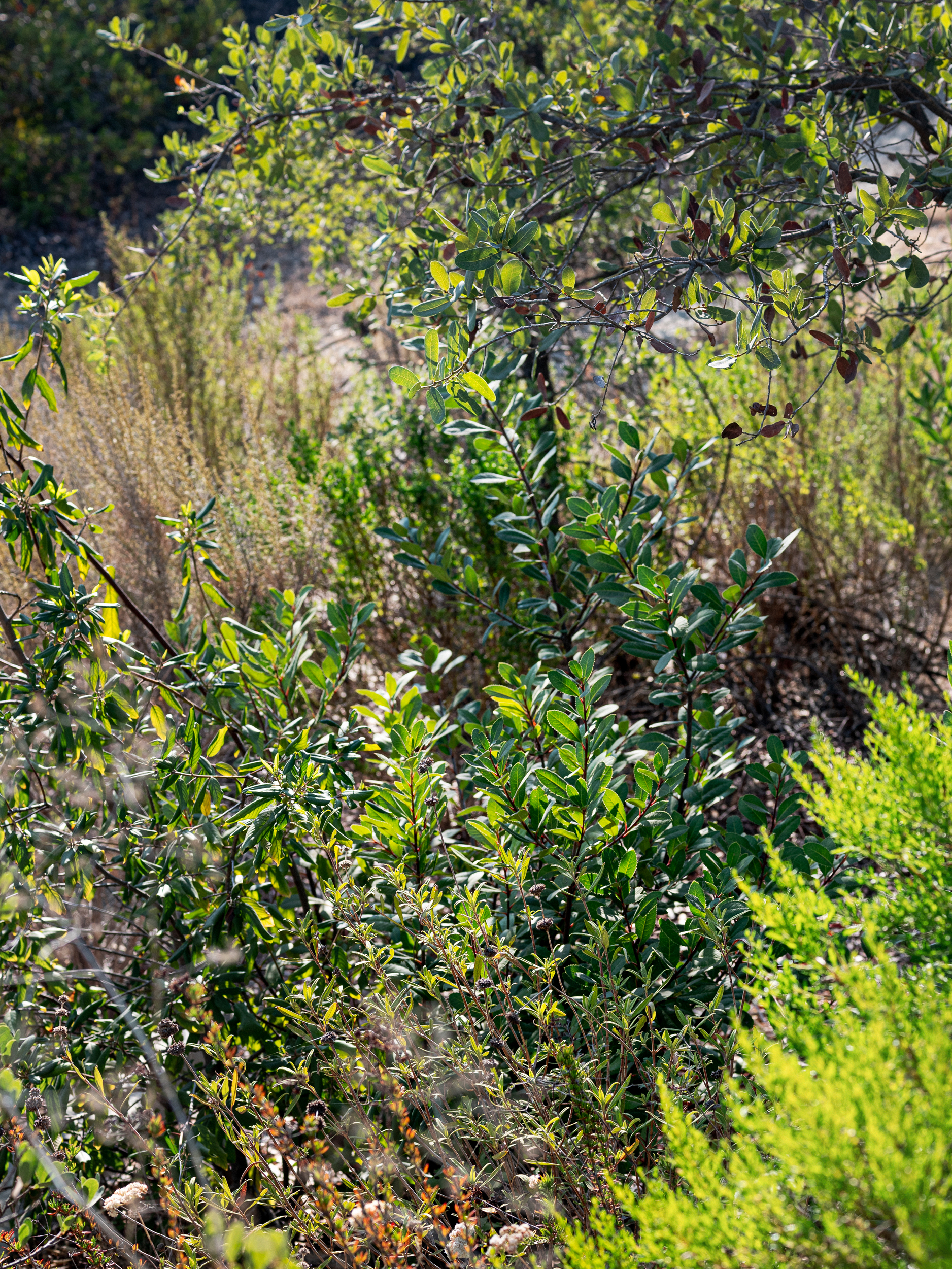Audubon Center at Debs Park
4700 North Griffin Ave
Los Angeles, CA 90031
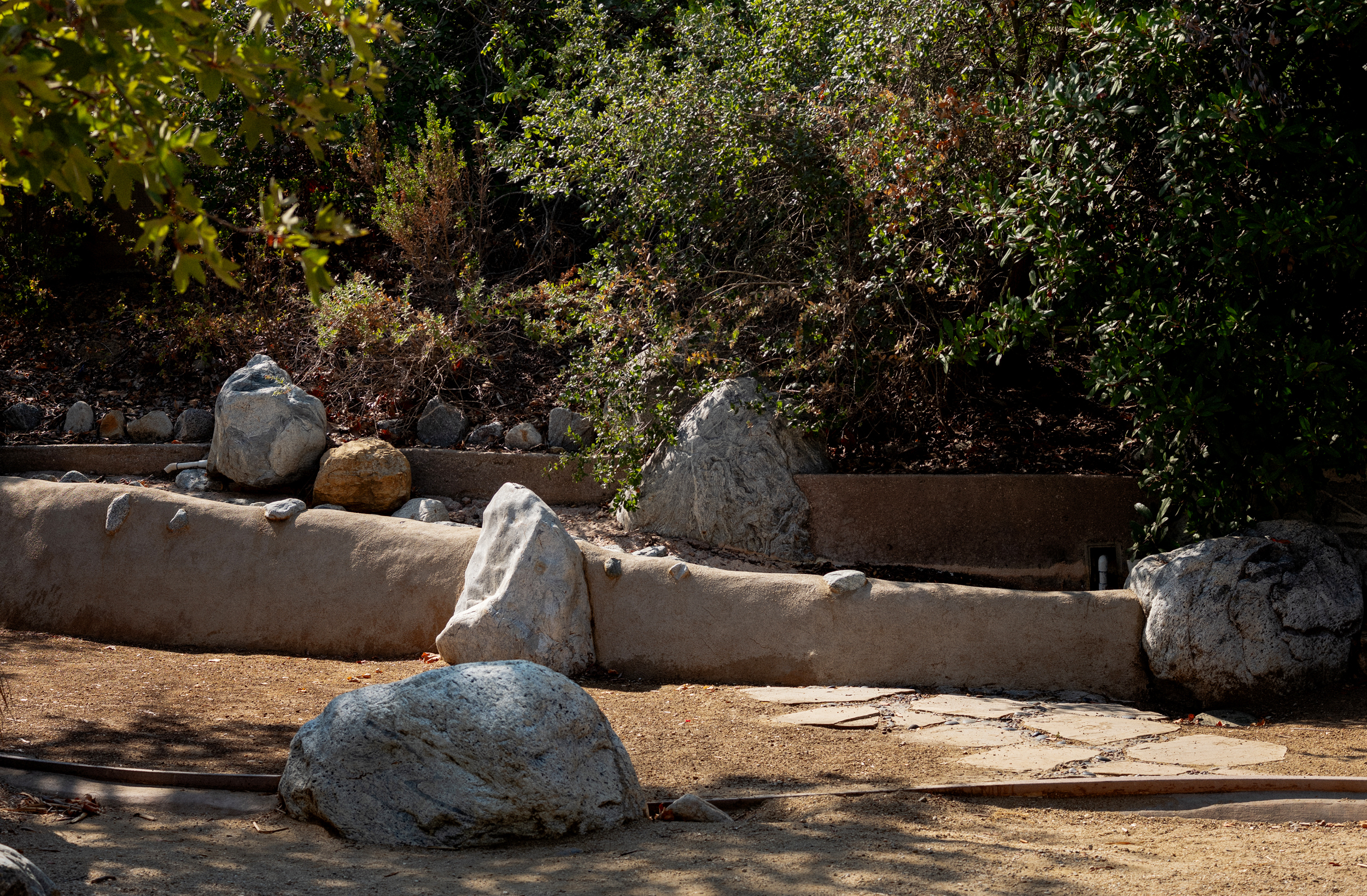
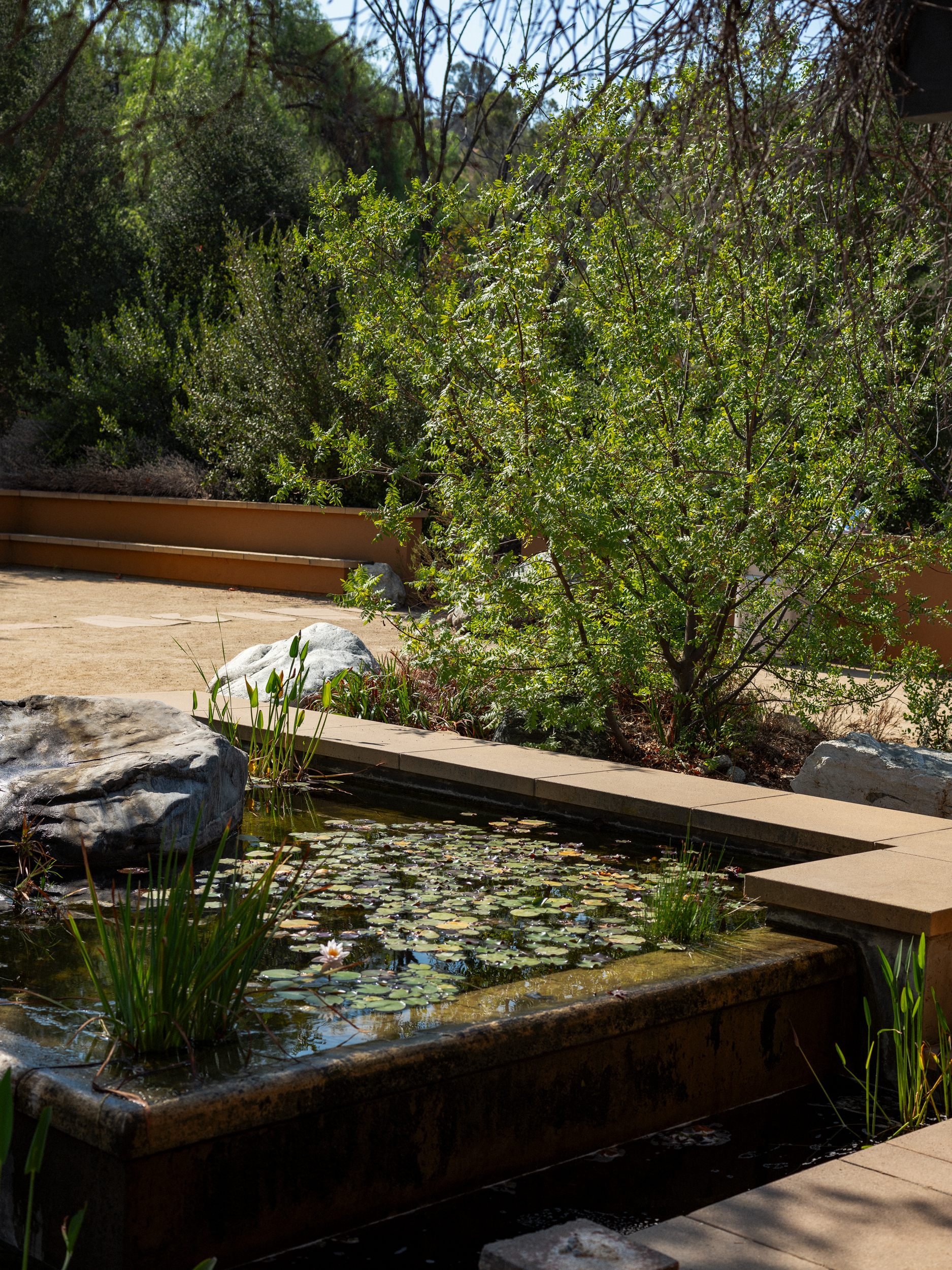
Established:
2003
Size:
17 acres
Features:
Native plant nursery
Public programming
Bird Stuff
LEED Certified Building
Tons of information
Best Time to visit:
Spring and Fall
In Spring the fremontodendron shrubs at the entrance to the center are in full bloom and they are not to be missed (despite us having no photos of them yet). Spring also brings wildflowers to the butterfly garden and the coastal sunflowers are in bloom. Fall brings all the gorgeous fall color found in the grapes on the covered bridge.
The Audubon Center demonstration garden is part of the 17 acres of Deb’s Park that the Center runs and is part of their long term restoration of the area. The space is entered through a small courtyard filled with oak trees, Fremontiendrons (which are not to be missed when in bloom), and a small raised pond of water. The main space of the Center is open and beautiful. The landscaping and hardscaping shows what good design can do; it creates sustainable, beautiful and functional space.
Around the main courtyard is a short trail that leads you through the chaparral hillside. Here there are two viewpoints of the Center, one from a bridge and the other higher up from the hillside. Look for the grapes, especially in fall, on the building and the covered bridge that crosses by the pond. The butterfly loop is also accessible from the Center and passes through the land part of the managed land. Around the main courtyard is a short trail that leads you through the chaparral hillside.
Around the main courtyard is a short trail that leads you through the chaparral hillside. Here there are two viewpoints of the Center, one from a bridge and the other higher up from the hillside. Look for the grapes, especially in fall, on the building and the covered bridge that crosses by the pond. The butterfly loop is also accessible from the Center and passes through the land part of the managed land. Around the main courtyard is a short trail that leads you through the chaparral hillside.
Here there are two viewpoints of the Center, one from a bridge and the other higher up from the hillside.
The Center is extremely water conscious, with an efficient watering system, permeable surfaces and low water native plant landscaping. This is no mean feat, Center has several large water features. Each pond is planted with native water plants, is filled with small fish and fills the all important role of water source in the ecosystem.
“The landscaping and hardscaping shows what good design can do; it creates sustainable, beautiful and functional space.”
The Audubon Center itself was the nation’s first LEED Platinum building in the United States. It is completely powered by on-site solar panels and functions totally off grid. It was built using recycled materials whenever possible, including scrap metal and melted down handguns in the structural rebar
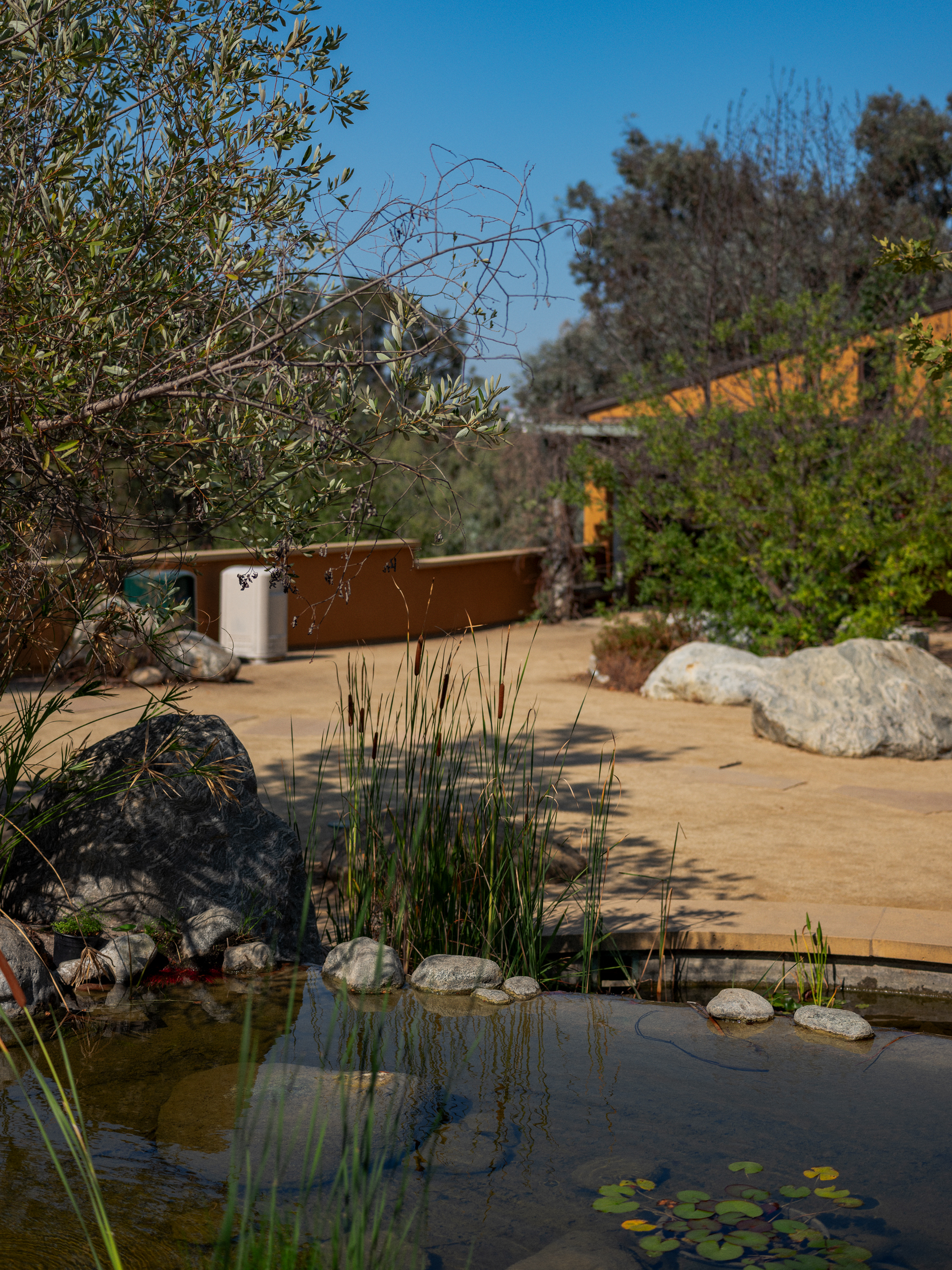
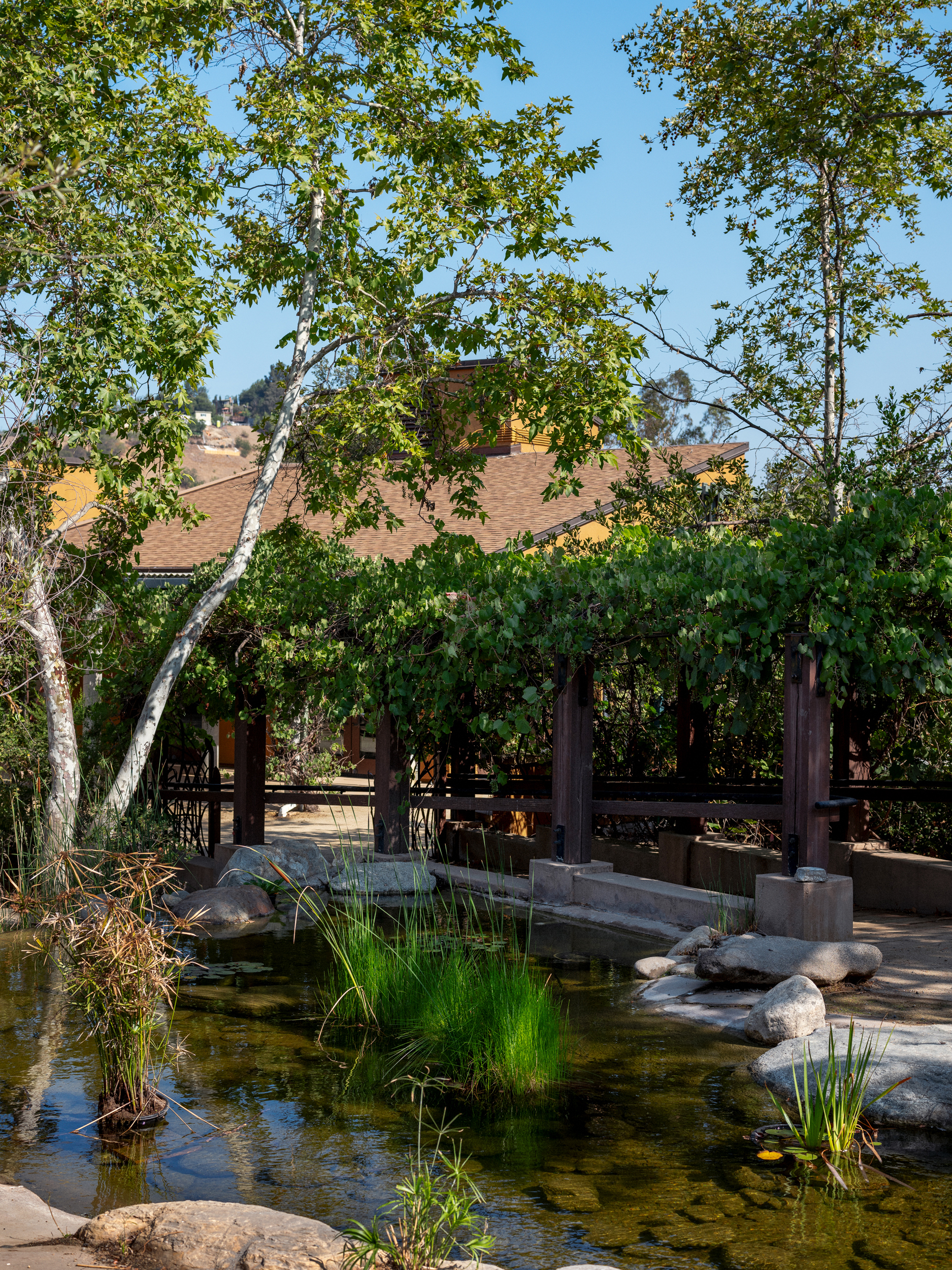
The on-site nursery, Los Nogales Nursery, was started in 2014 in conjunction with the National Parks Service and the Theodore Payne Foundation, providing plants for the restoration. The plants are grown from seeds collected from Deb’s Park and thus help preserve the genetic diversity of our region. They have grown over 5,000 California native plants at the site and, with the help of volunteers, have reintroduced them into the park.
The main focus of the restoration is a butterfly garden found on the path that leads to the nursery.
Recently the nursery was open to public sale. The sale included plants that were grown from the local genetics in the park. For those who are gardening in difficult sites, such hillsides, logical genetics can be really helpful when trying to establish a garden.
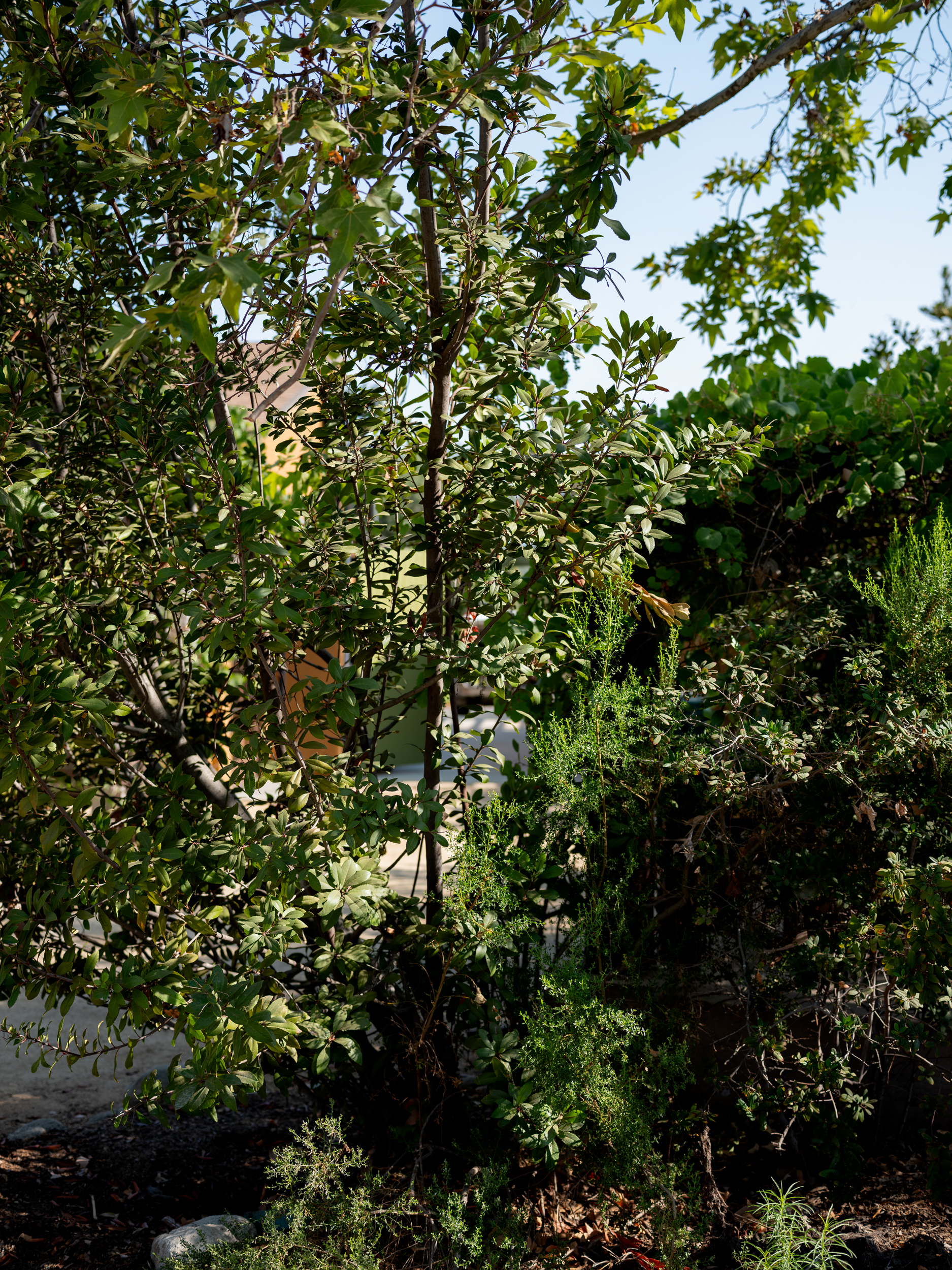
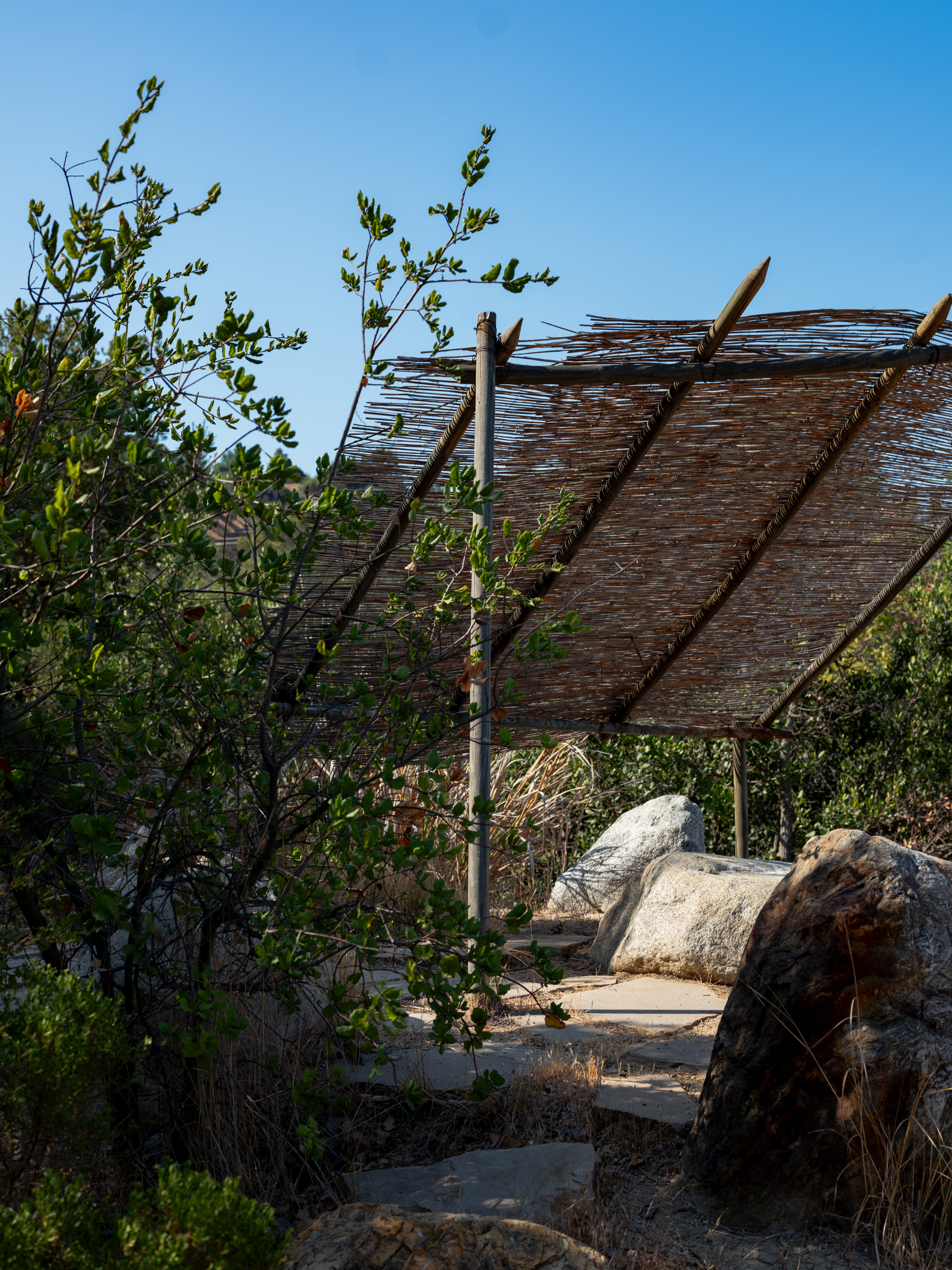
The Audubon Center at Debs park’s main goal is restoration, not only of the park itself, but of restoring the connection between the people and the land of Los Angeles. All through the Center there is a strong focus on the importance of proper land stewardship and how that affects the environment.
Much of the outdoor space is dedicated to this goal. There is a direct link drawn between the presence of native plants and a functioning ecosystem and the abundance, or lack thereof, of bird life. In short saying “if you like birds you need to like native plants”. There are interpretive signs addressing the uses of native plants, the Center’s place as part of the Arroyo Seco Watershed and the history of the Los Angeles Basin as once being an interconnected water-filled landscape.
Much of the outdoor space is dedicated to this goal. There is a direct link drawn between the presence of native plants and a functioning ecosystem and the abundance, or lack thereof, of bird life. In short saying “if you like birds you need to like native plants”. There are interpretive signs addressing the uses of native plants, the Center’s place as part of the Arroyo Seco Watershed and the history of the Los Angeles Basin as once being an interconnected water-filled landscape.
Through this, the park connected to seemingly disparate places like the Ballona Wetlands, Madrona Marsh and the Gardenia Willows.
“There is a direct link drawn between the presence of native plants and a functioning ecosystem and the abundance, or lack thereof, of bird life.”
The Audubon Center takes time to acknowledge the Gaberlino-Tongva people, their connection with the land and their centuries long management of the land. There is a kiiy, the traditional house of the Tongva, and information about the differences in the sustainability of kiiy versus the traditional western European houses.
Opening Hours:
Thursdays to Sundays
8:00AM to 4:00PM
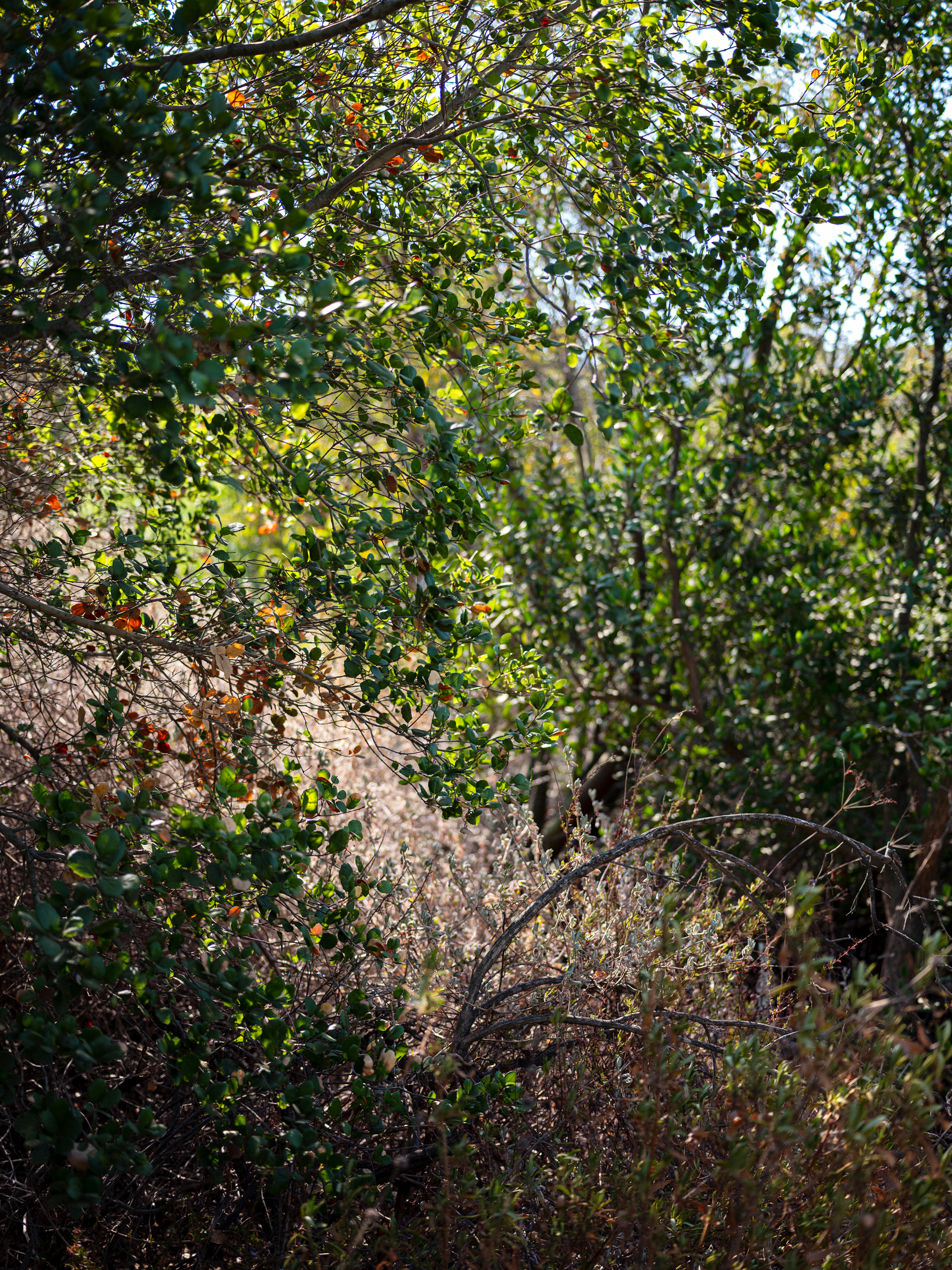
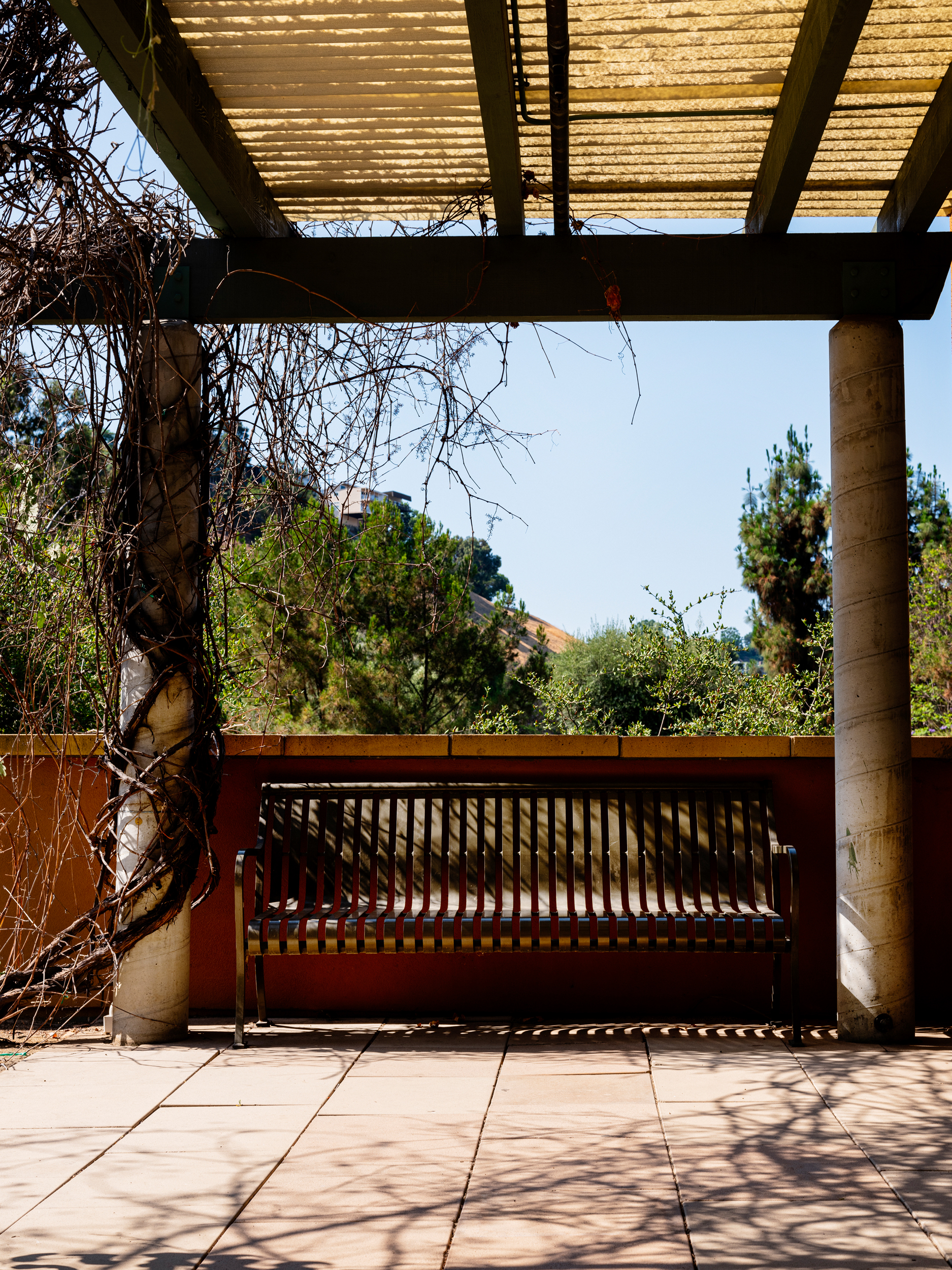
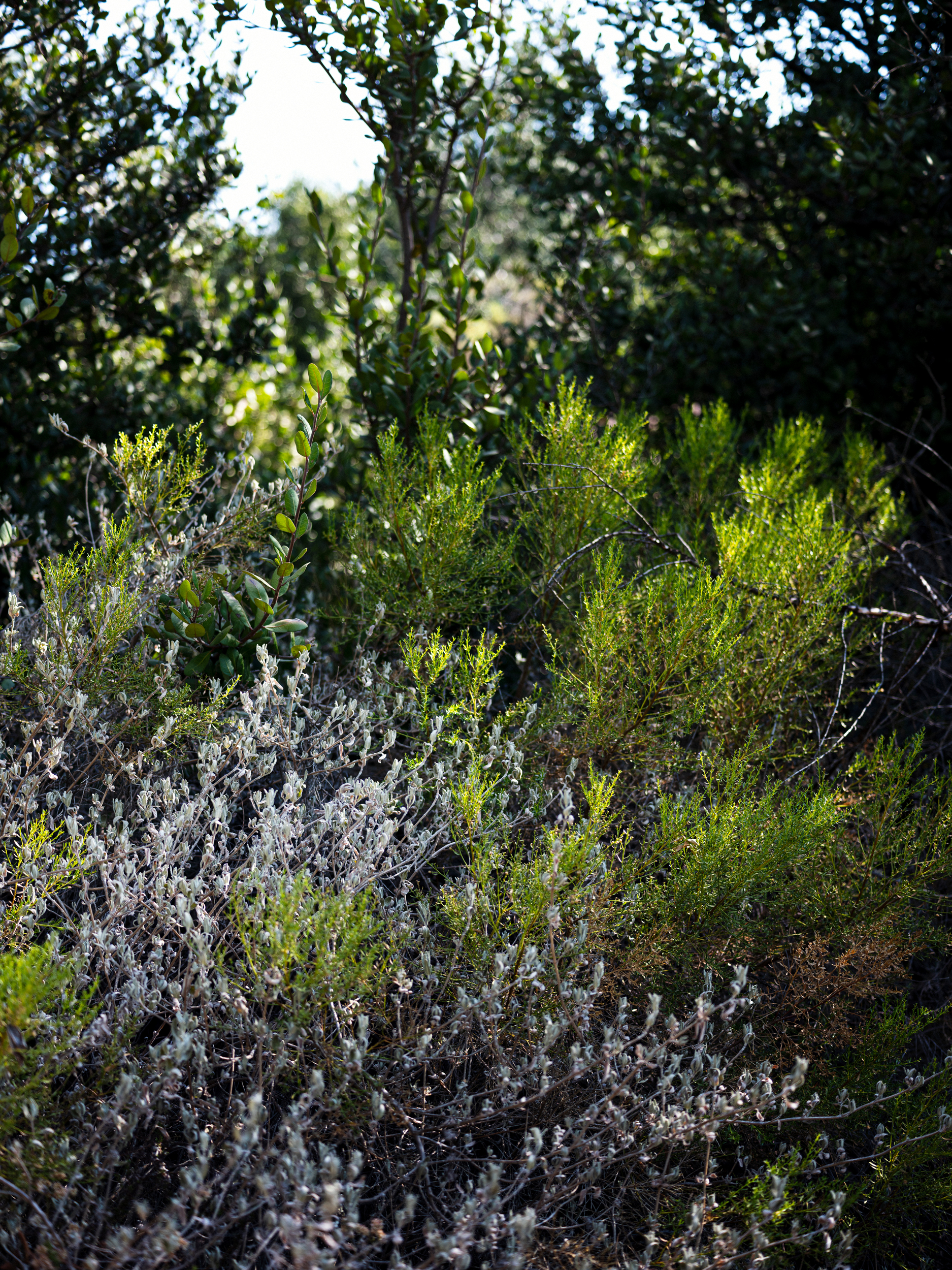
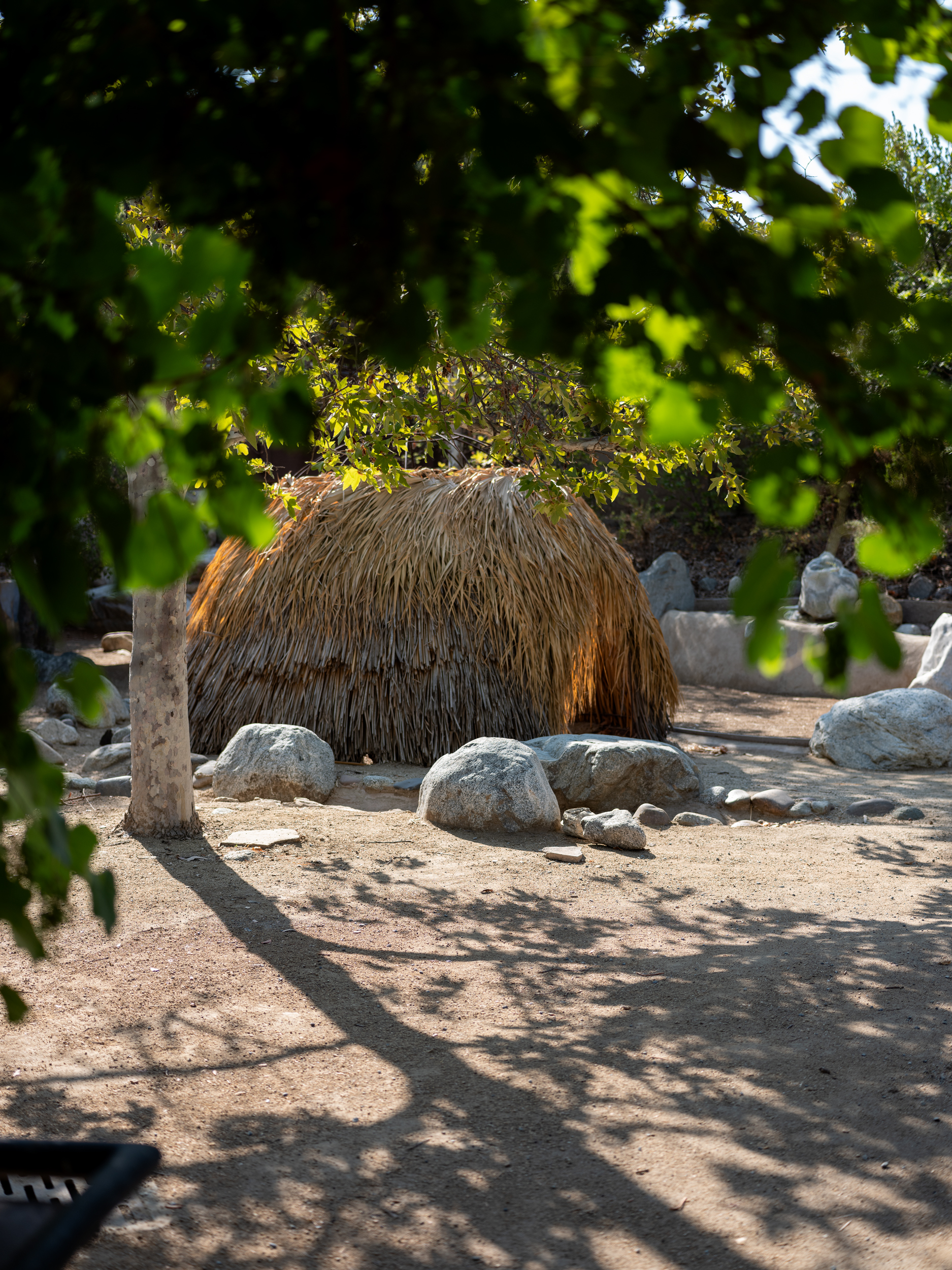
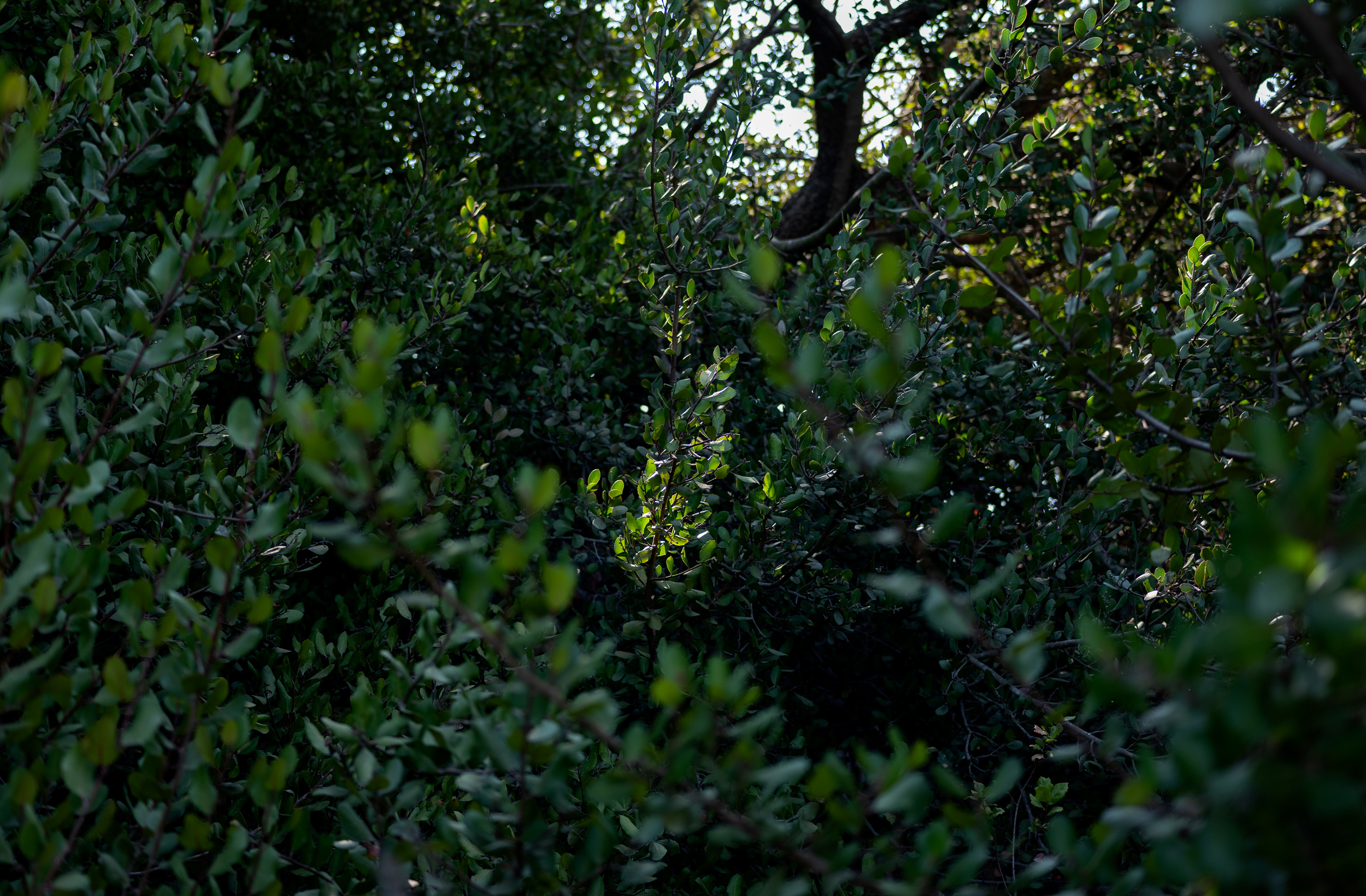
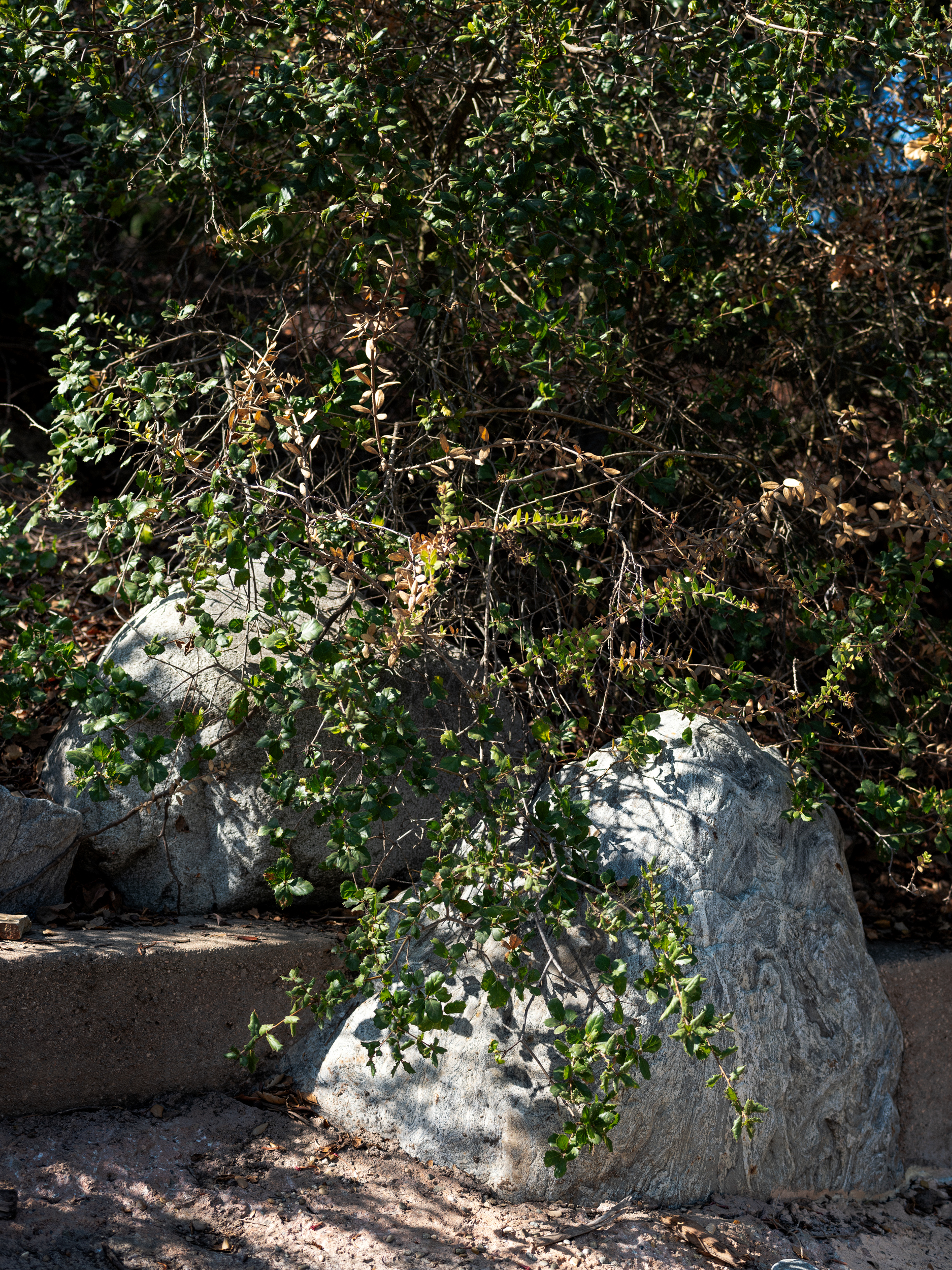
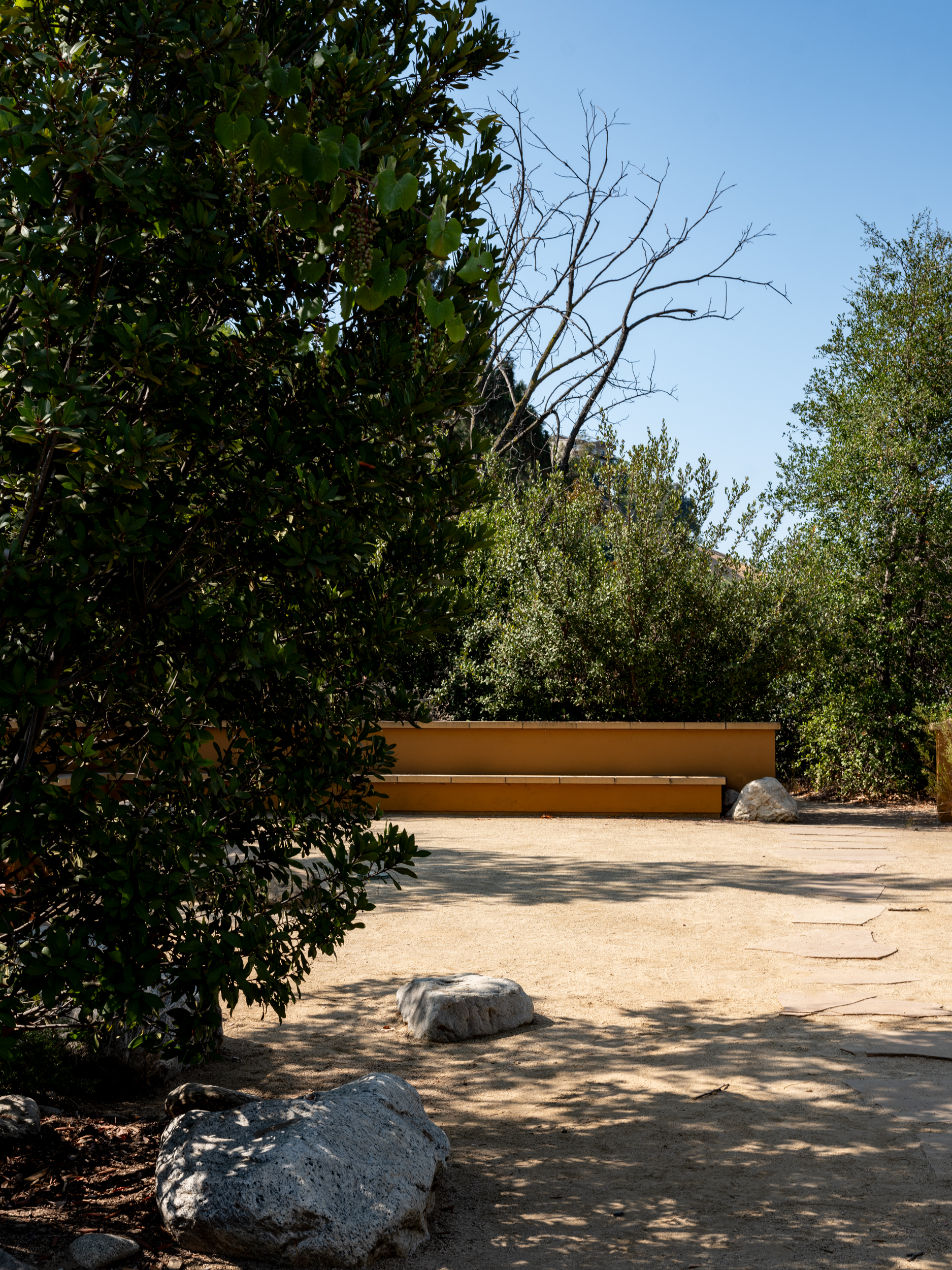
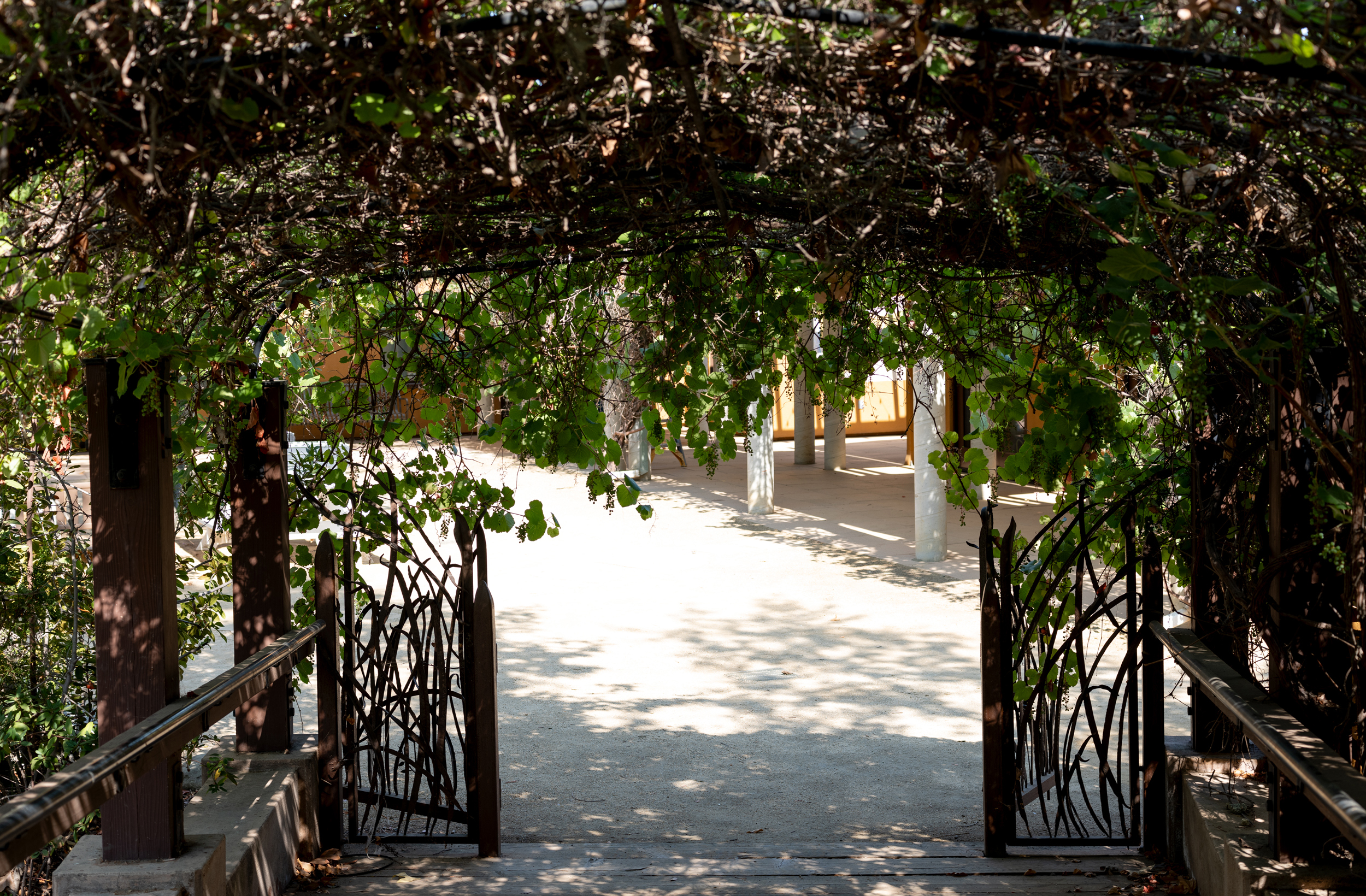
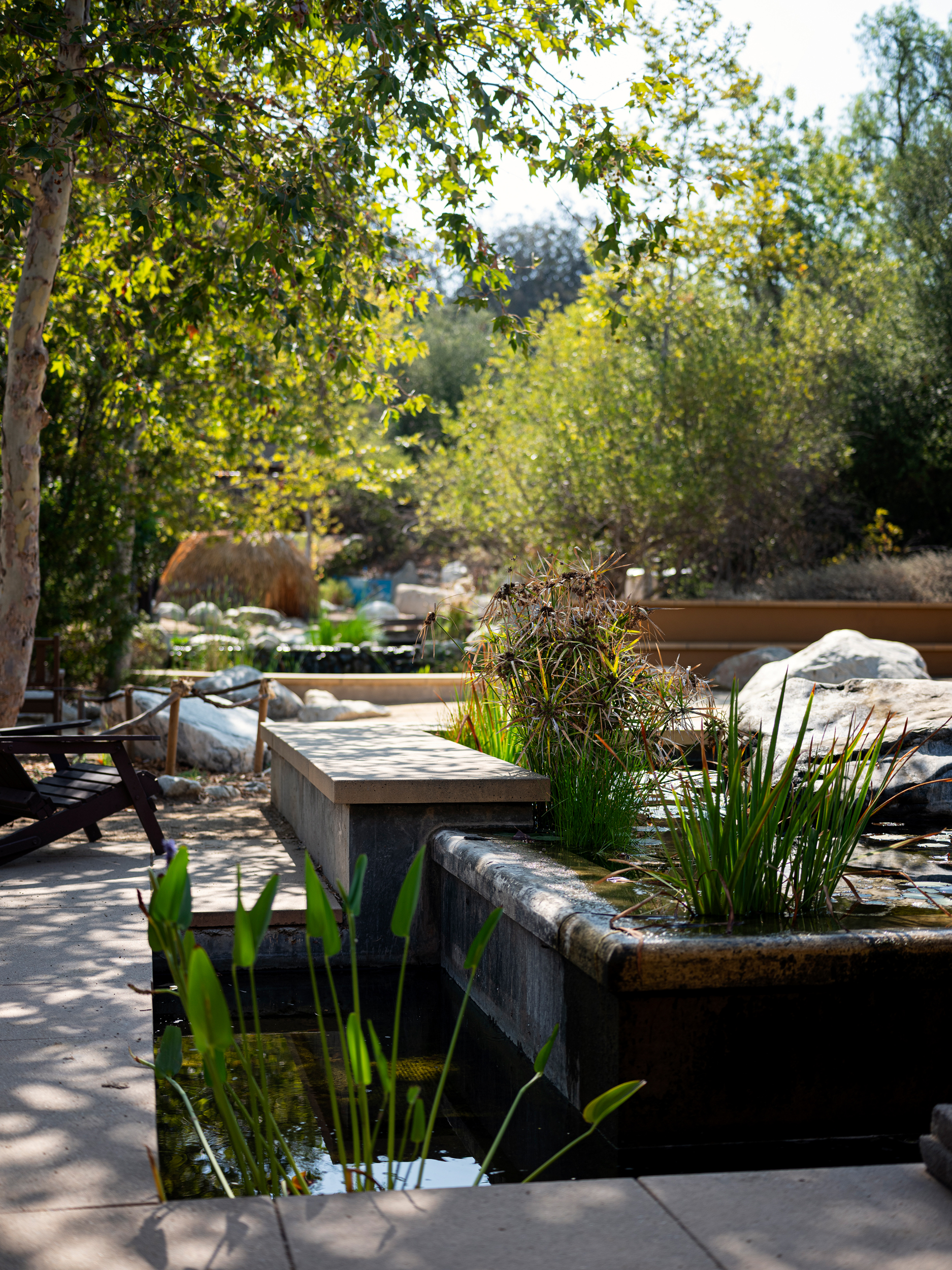

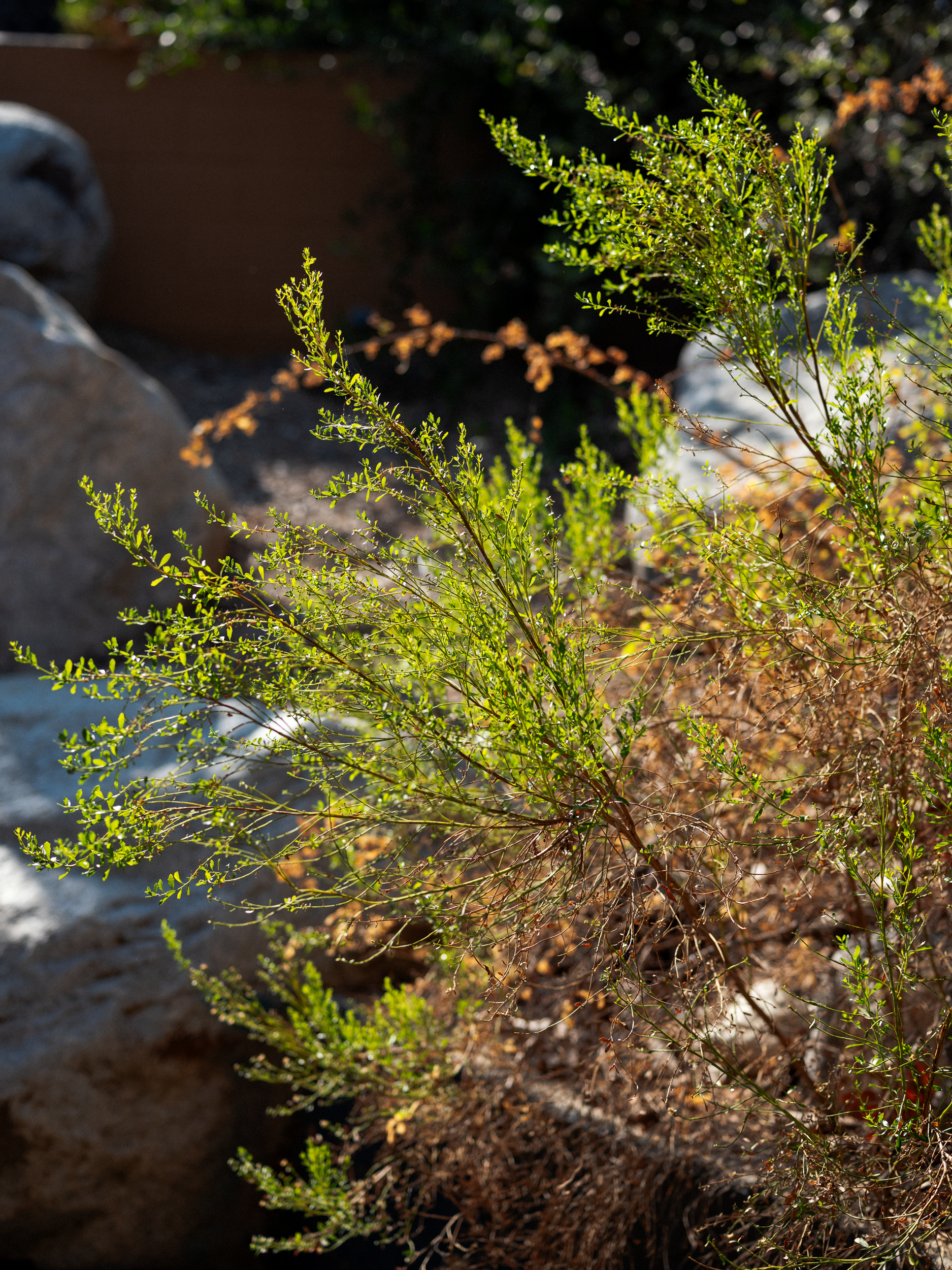

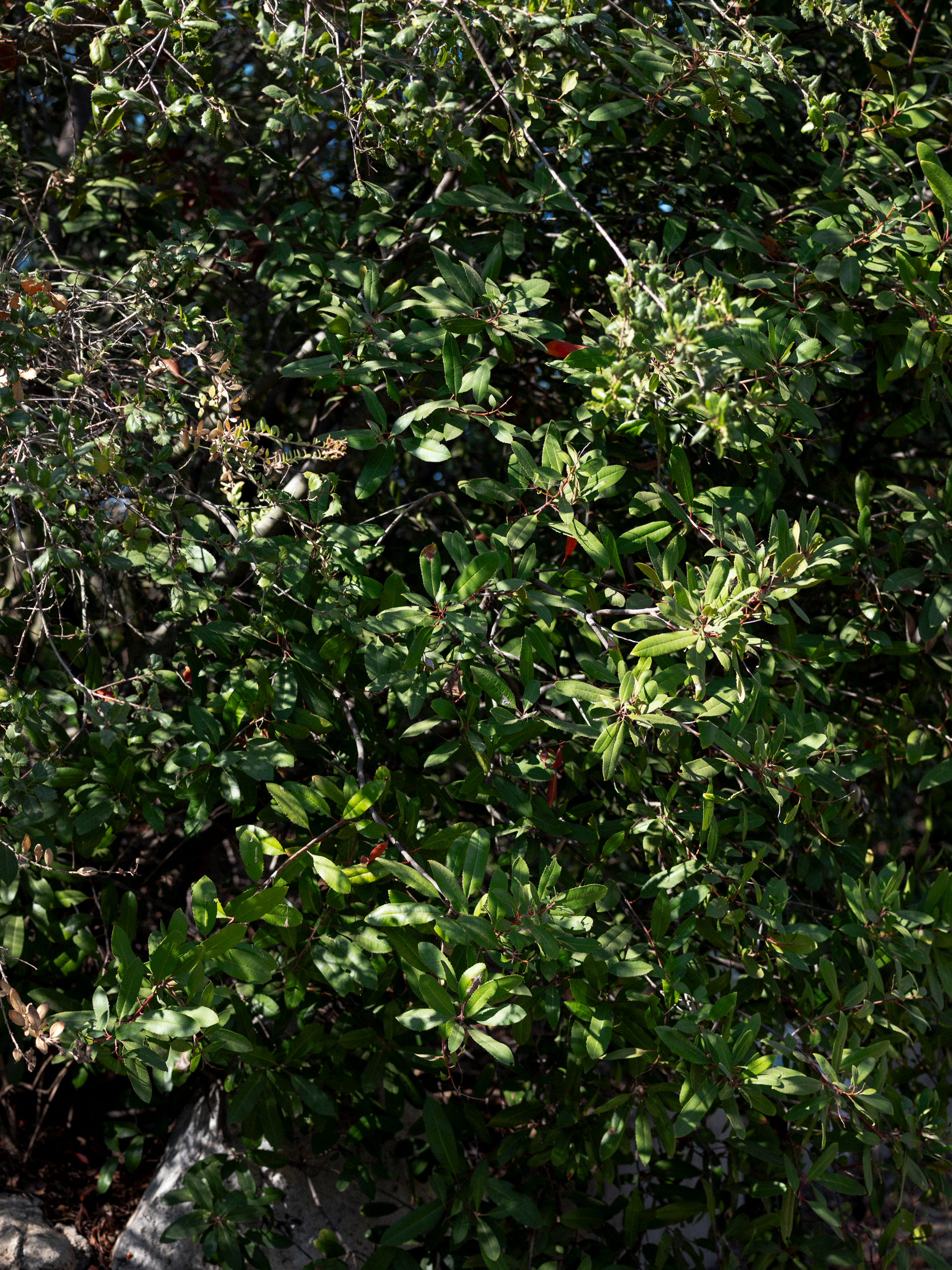
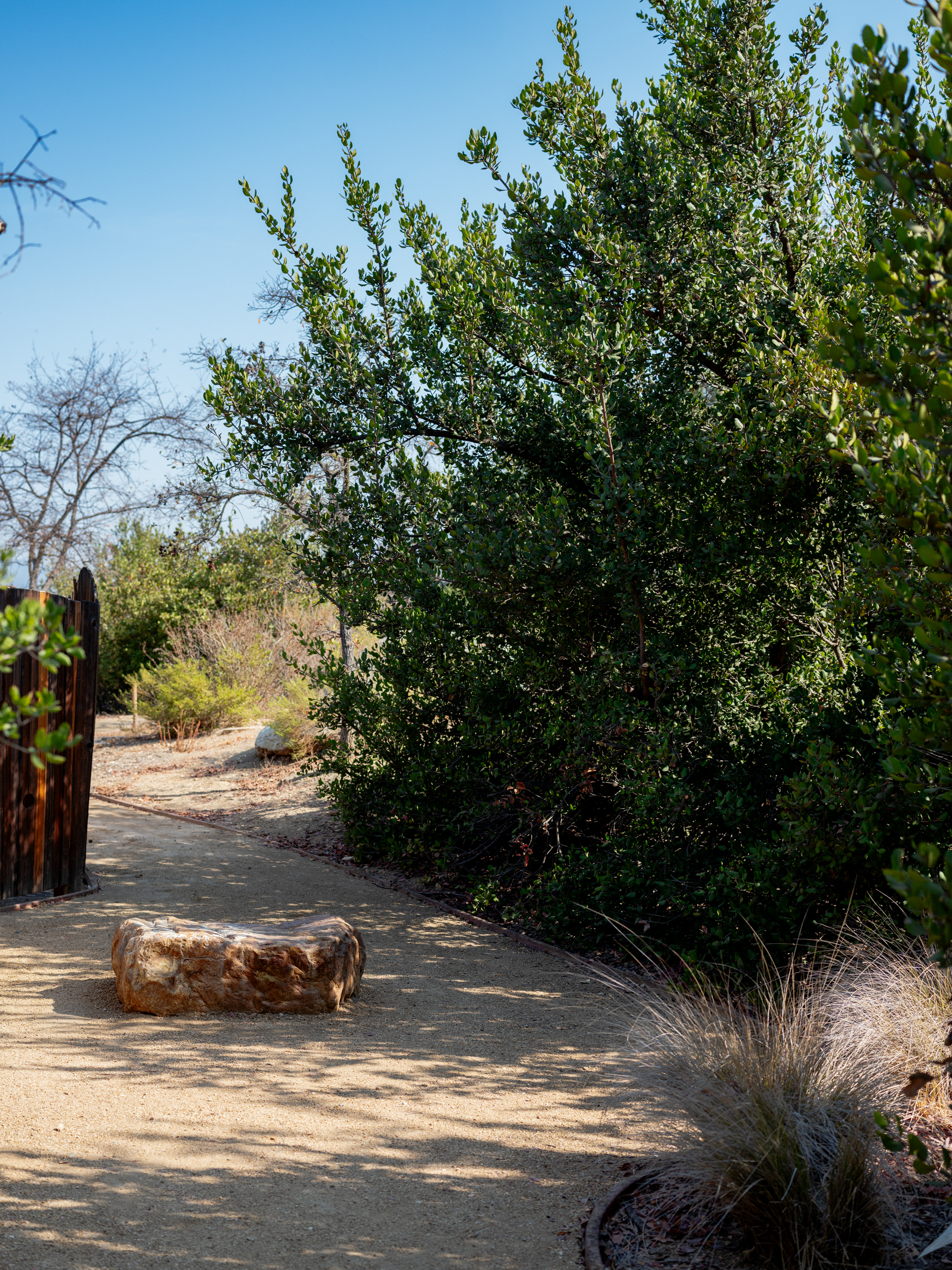

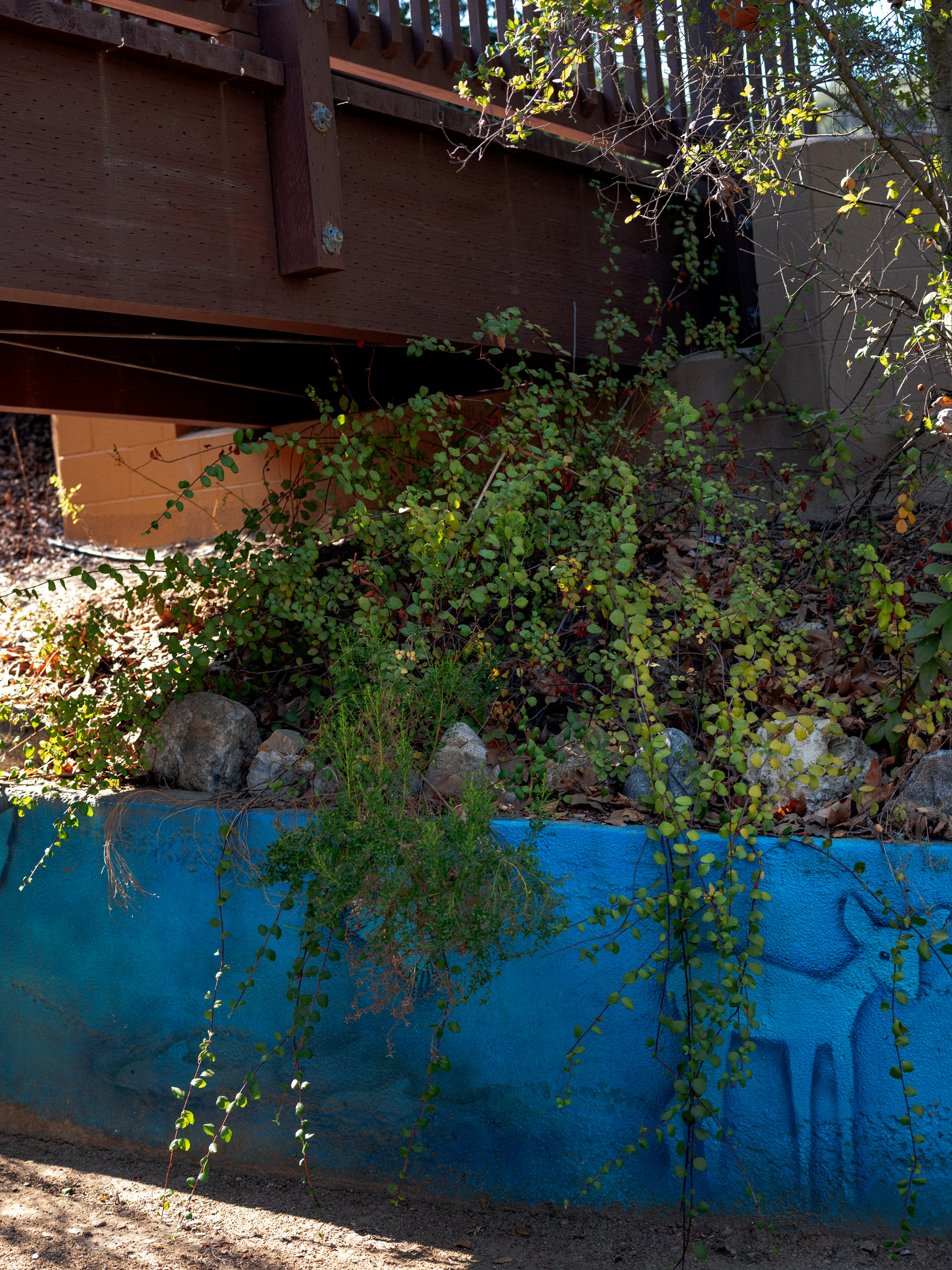
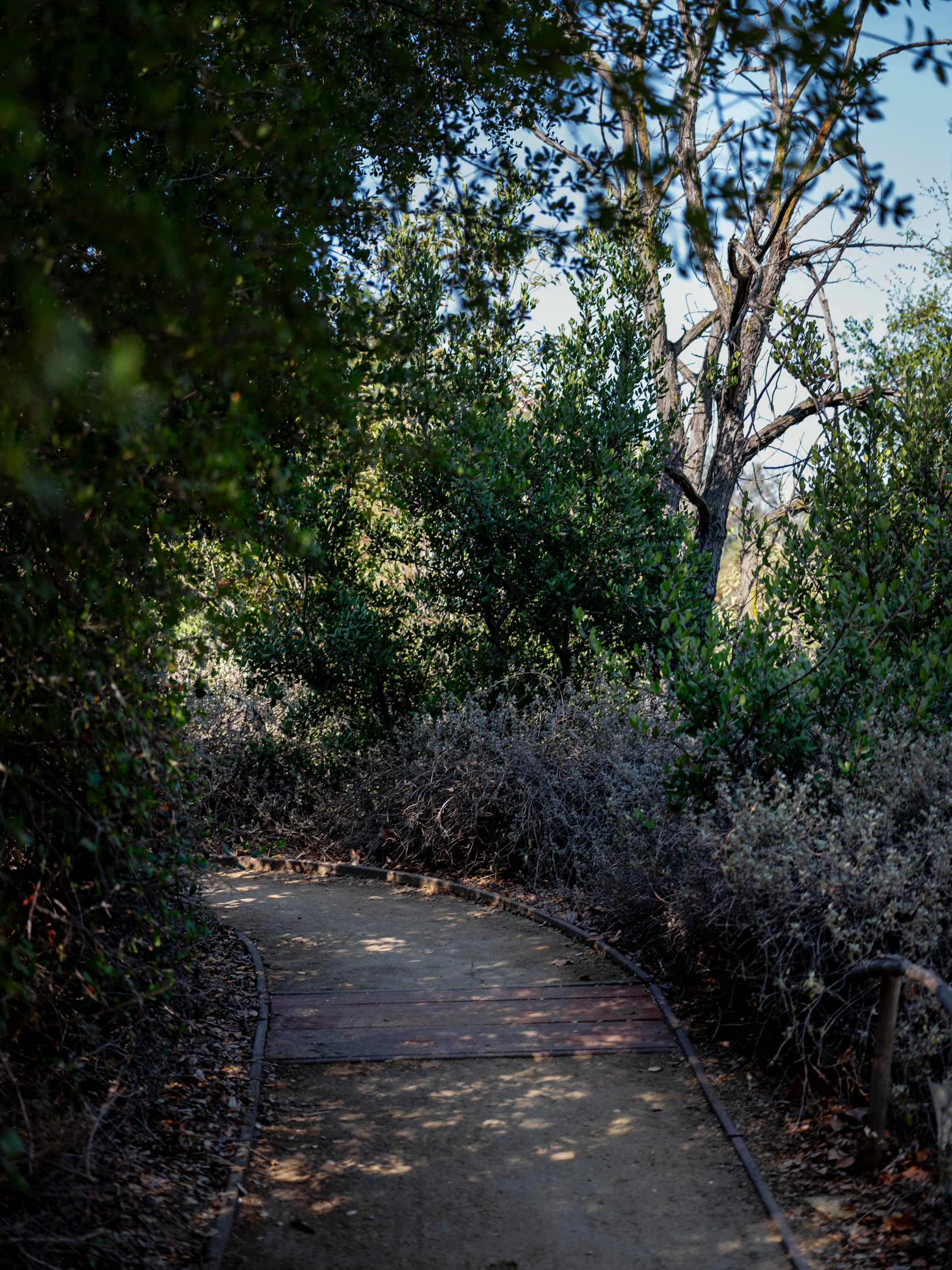
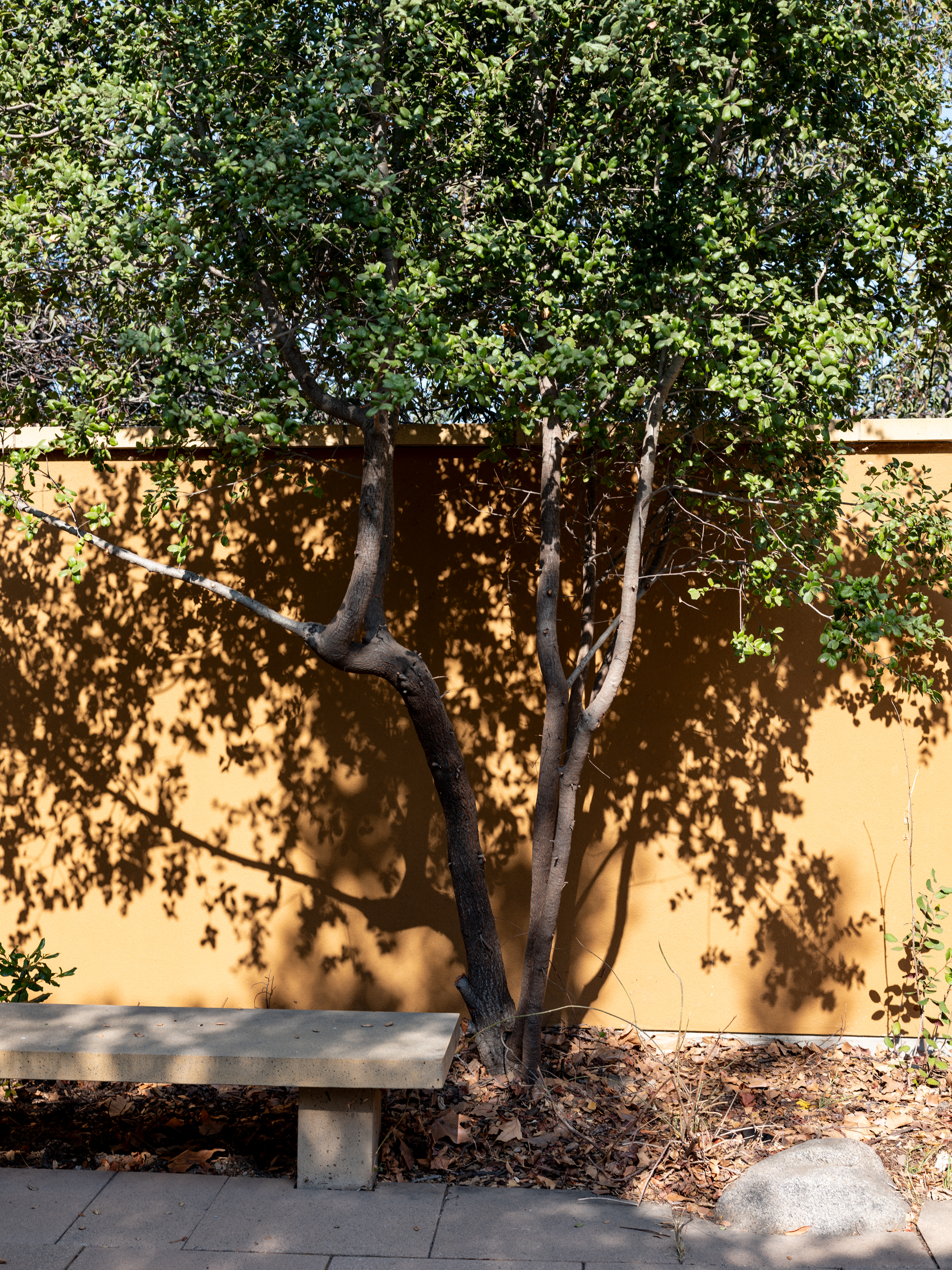
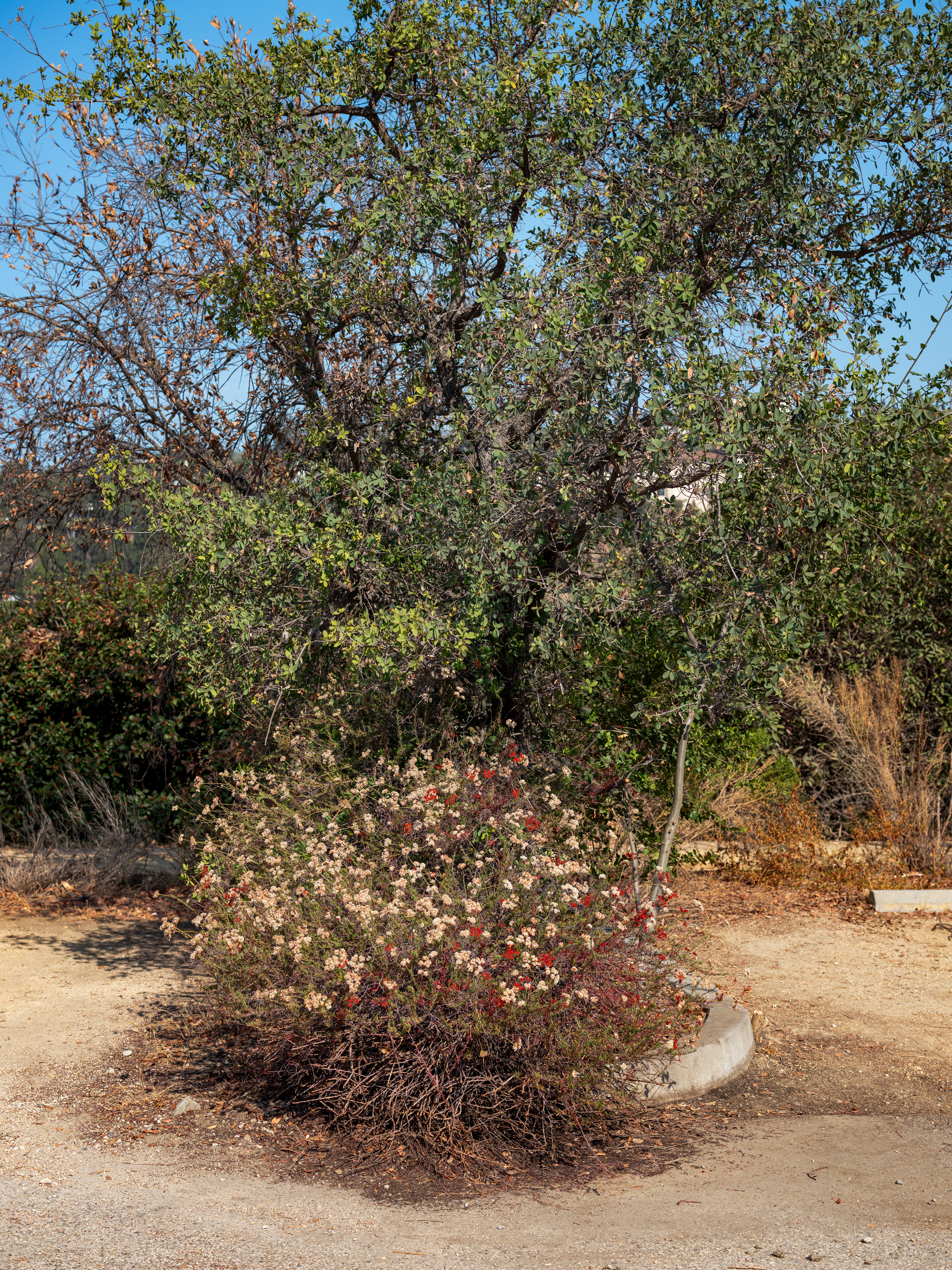
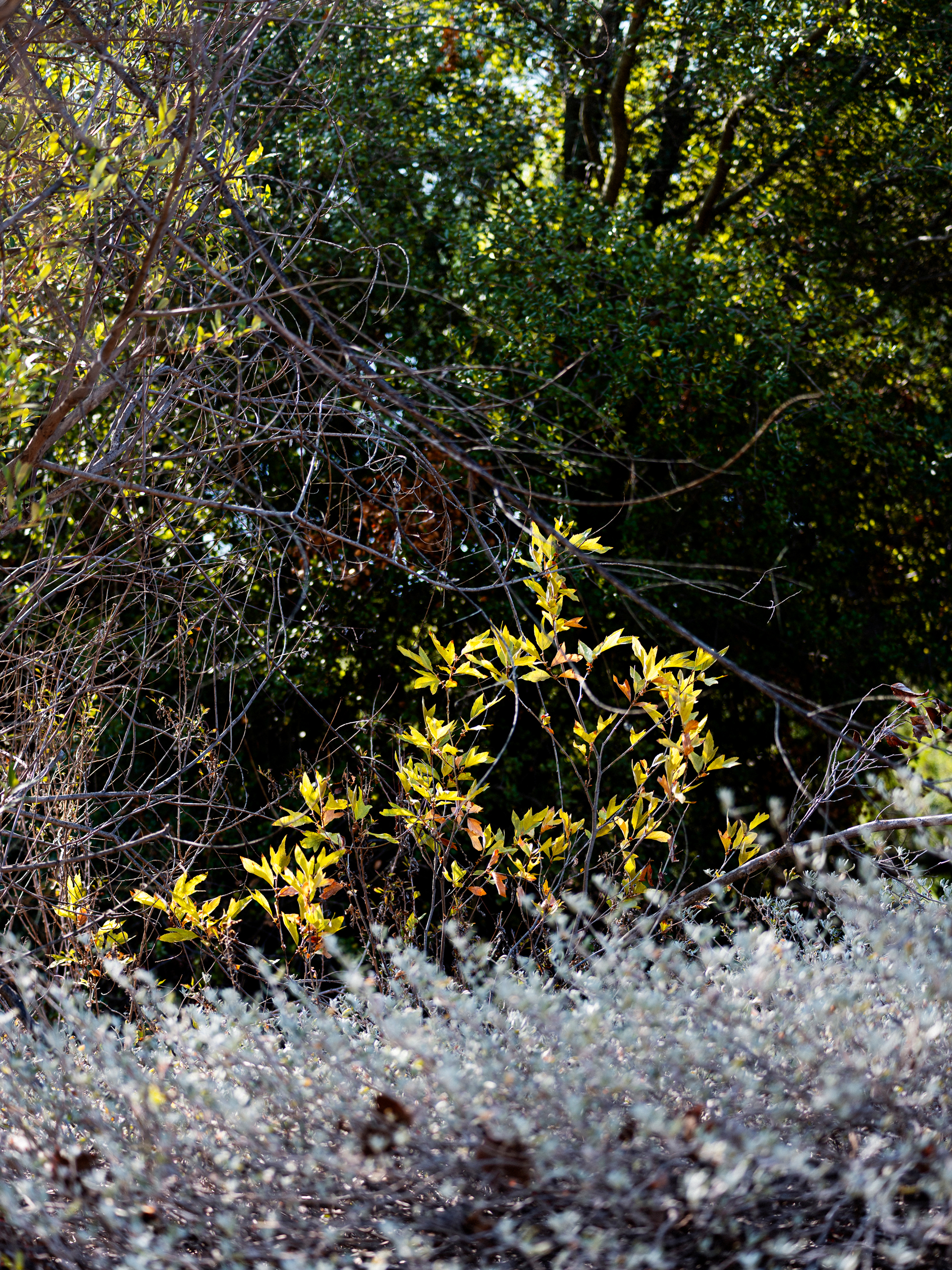
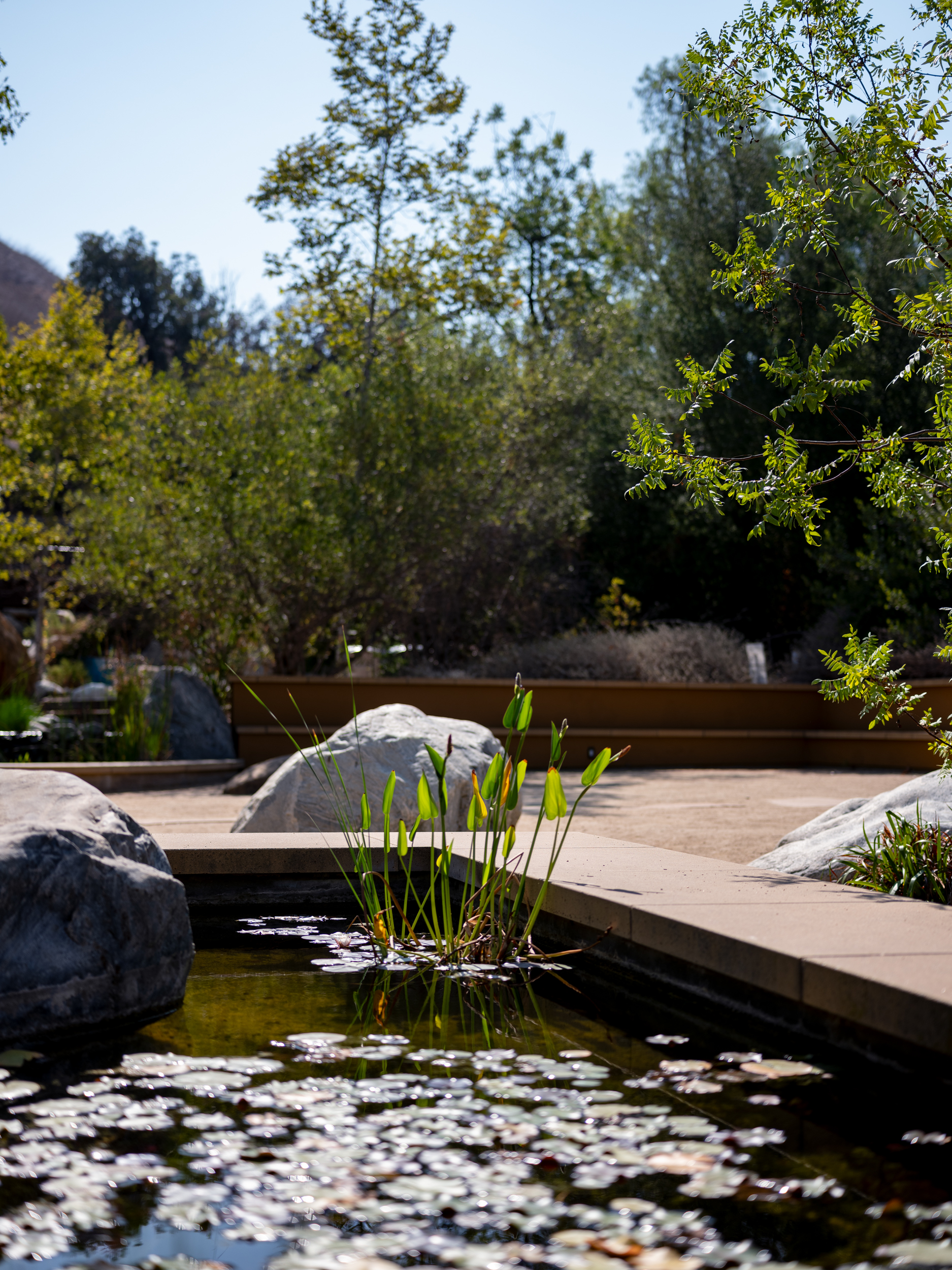
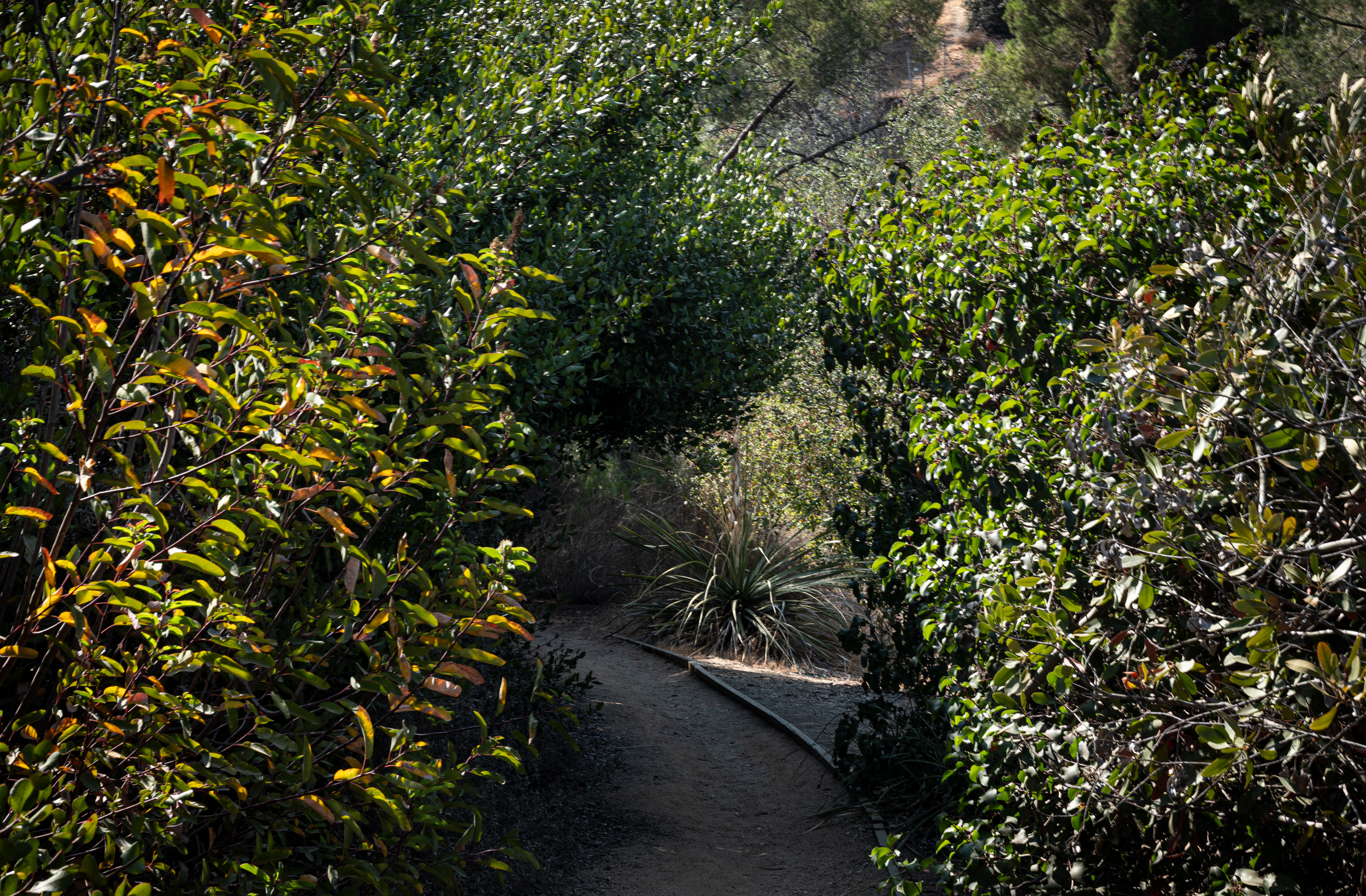
Audubon Center at Debs Park
4700 North Griffin Ave
Los Angeles, CA 90031


Established:
2003
Size:
17 acres
Features:
Native plant nursery
Public programming
Bird Stuff
LEED Certified Building
Tons of information
Best Time to visit:
Spring and Fall
In Spring the fremontodendron shrubs at the entrance to the center are in full bloom and they are not to be missed (despite us having no photos of them yet). Spring also brings wildflowers to the butterfly garden and the coastal sunflowers are in bloom. Fall brings all the gorgeous fall color found in the grapes on the covered bridge.
The Audubon Center demonstration garden is part of the 17 acres of Deb’s Park that the Center runs and is part of their long term restoration of the area. The space is entered through a small courtyard filled with oak trees, Fremontiendrons (which are not to be missed when in bloom), and a small raised pond of water. The main space of the Center is open and beautiful. The landscaping and hardscaping shows what good design can do; it creates sustainable, beautiful and functional space.
Around the main courtyard is a short trail that leads you through the chaparral hillside. Here there are two viewpoints of the Center, one from a bridge and the other higher up from the hillside. Look for the grapes, especially in fall, on the building and the covered bridge that crosses by the pond. The butterfly loop is also accessible from the Center and passes through the land part of the managed land. Around the main courtyard is a short trail that leads you through the chaparral hillside.
Around the main courtyard is a short trail that leads you through the chaparral hillside. Here there are two viewpoints of the Center, one from a bridge and the other higher up from the hillside. Look for the grapes, especially in fall, on the building and the covered bridge that crosses by the pond. The butterfly loop is also accessible from the Center and passes through the land part of the managed land. Around the main courtyard is a short trail that leads you through the chaparral hillside.
Here there are two viewpoints of the Center, one from a bridge and the other higher up from the hillside.
The Center is extremely water conscious, with an efficient watering system, permeable surfaces and low water native plant landscaping. This is no mean feat, Center has several large water features. Each pond is planted with native water plants, is filled with small fish and fills the all important role of water source in the ecosystem.
“The landscaping and hardscaping shows what good design can do; it creates sustainable, beautiful and functional space.”
The Audubon Center itself was the nation’s first LEED Platinum building in the United States. It is completely powered by on-site solar panels and functions totally off grid. It was built using recycled materials whenever possible, including scrap metal and melted down handguns in the structural rebar


The on-site nursery, Los Nogales Nursery, was started in 2014 in conjunction with the National Parks Service and the Theodore Payne Foundation, providing plants for the restoration. The plants are grown from seeds collected from Deb’s Park and thus help preserve the genetic diversity of our region. They have grown over 5,000 California native plants at the site and, with the help of volunteers, have reintroduced them into the park.
The main focus of the restoration is a butterfly garden found on the path that leads to the nursery.
Recently the nursery was open to public sale. The sale included plants that were grown from the local genetics in the park. For those who are gardening in difficult sites, such hillsides, logical genetics can be really helpful when trying to establish a garden.


The Audubon Center at Debs park’s main goal is restoration, not only of the park itself, but of restoring the connection between the people and the land of Los Angeles. All through the Center there is a strong focus on the importance of proper land stewardship and how that affects the environment.
Much of the outdoor space is dedicated to this goal. There is a direct link drawn between the presence of native plants and a functioning ecosystem and the abundance, or lack thereof, of bird life. In short saying “if you like birds you need to like native plants”. There are interpretive signs addressing the uses of native plants, the Center’s place as part of the Arroyo Seco Watershed and the history of the Los Angeles Basin as once being an interconnected water-filled landscape.
Much of the outdoor space is dedicated to this goal. There is a direct link drawn between the presence of native plants and a functioning ecosystem and the abundance, or lack thereof, of bird life. In short saying “if you like birds you need to like native plants”. There are interpretive signs addressing the uses of native plants, the Center’s place as part of the Arroyo Seco Watershed and the history of the Los Angeles Basin as once being an interconnected water-filled landscape.
Through this, the park connected to seemingly disparate places like the Ballona Wetlands, Madrona Marsh and the Gardenia Willows.
“There is a direct link drawn between the presence of native plants and a functioning ecosystem and the abundance, or lack thereof, of bird life.”
The Audubon Center takes time to acknowledge the Gaberlino-Tongva people, their connection with the land and their centuries long management of the land. There is a kiiy, the traditional house of the Tongva, and information about the differences in the sustainability of kiiy versus the traditional western European houses.
Opening Hours:
Thursdays to Sundays
8:00AM to 4:00PM






















Audubon Center at Debs Park
4700 North Griffin Ave
Los Angeles, CA 90031

Established:
2003
Size:
17 acres
Features:
Native plant nursery
Public programming
Bird Stuff
LEED Certified Building
Tons of information
Best time to Visit:
Spring and Fall
In Spring the fremontodendron shrubs at the entrance to the center are in full bloom and they are not to be missed (despite us having no photos of them yet). Spring also brings wildflowers to the butterfly garden and the coastal sunflowers are in bloom. Fall brings all the gorgeous fall color found in the grapes on the covered bridge.
The Audubon Center demonstration garden is part of the 17 acres of Deb’s Park that the Center runs and is part of their long term restoration of the area. The space is entered through a small courtyard filled with oak trees, Fremontiendrons (which are not to be missed when in bloom), and a small raised pond of water. The main space of the Center is open and beautiful. The landscaping and hardscaping shows what good design can do; it creates sustainable, beautiful and functional space.

Around the main courtyard is a short trail that leads you through the chaparral hillside. Here there are two viewpoints of the Center, one from a bridge and the other higher up from the hillside. Look for the grapes, especially in fall, on the building and the covered bridge that crosses by the pond. The butterfly loop is also accessible from the Center and passes through the land part of the managed land. Around the main courtyard is a short trail that leads you through the chaparral hillside. Here there are two viewpoints of the Center, one from a bridge and the other higher up from the hillside.
The Center is extremely water conscious, with an efficient watering system, permeable surfaces and low water native plant landscaping. This is no mean feat, Center has several large water features. Each pond is planted with native water plants, is filled with small fish and fills the all important role of water source in the ecosystem.
“The landscaping and hardscaping shows what good design can do; it creates sustainable, beautiful and functional space.”
The Audubon Center itself was the nation’s first LEED Platinum building in the United States. It is completely powered by on-site solar panels and functions totally off grid. It was built using recycled materials whenever possible, including scrap metal and melted down handguns in the structural rebar.

The on-site nursery, Los Nogales Nursery, was started in 2014 in conjunction with the National Parks Service and the Theodore Payne Foundation, providing plants for the restoration. The plants are grown from seeds collected from Deb’s Park and thus help preserve the genetic diversity of our region. They have grown over 5,000 California native plants at the site and, with the help of volunteers, have reintroduced them into the park. The main focus of the restoration is a butterfly garden found on the path that leads to the nursery.

Recently the nursery was open to public sale. The sale included plants that were grown from the local genetics in the park. For those who are gardening in difficult sites, such hillsides, logical genetics can be really helpful when trying to establish a garden.

The Audubon Center at Debs park’s main goal is restoration, not only of the park itself, but of restoring the connection between the people and the land of Los Angeles. All through the Center there is a strong focus on the importance of proper land stewardship and how that affects the environment.
Much of the outdoor space is dedicated to this goal. There is a direct link drawn between the presence of native plants and a functioning ecosystem and the abundance, or lack thereof, of bird life. In short saying “if you like birds you need to like native plants”. There are interpretive signs addressing the uses of native plants, the Center’s place as part of the Arroyo Seco Watershed and the history of the Los Angeles Basin as once being an interconnected water-filled landscape.
Much of the outdoor space is dedicated to this goal. There is a direct link drawn between the presence of native plants and a functioning ecosystem and the abundance, or lack thereof, of bird life. In short saying “if you like birds you need to like native plants”. There are interpretive signs addressing the uses of native plants, the Center’s place as part of the Arroyo Seco Watershed and the history of the Los Angeles Basin as once being an interconnected water-filled landscape.

Through this, the park connected to seemingly disparate places like the Ballona Wetlands, Madrona Marsh and the Gardenia Willows.
“There is a direct link drawn between the presence of native plants and a functioning ecosystem and the abundance, or lack thereof, of bird life.”
The Audubon Center takes time to acknowledge the Gaberlino-Tongva people, their connection with the land and their centuries long management of the land. There is a kiiy, the traditional house of the Tongva, and information about the differences in the sustainability of kiiy versus the traditional western European houses.
Opening Hours:
Thursdays to Sundays
8:00AM to 4:00PM






















